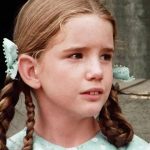Did you grow up watching the classic American sitcom Leave it to Beaver? It was, without a doubt, one of the sweetest and lighthearted comedy shows in the history of American television.
At a time when many American shows were experimenting with being edgy, depicting sex and violence, and breaking taboos – Leave it to Beaver managed to capture the idyllic American lifestyle that many of us would love to hearken back to.
But did you know about the scene that took Leave it to Beaver off the air? This scene was unusual for the time and would later inspire series finales of other shows.
Without knowing it, the creators of Leave it to Beaver had created a groundbreaking show. Let’s learn more about Leave it to Beaver and that unusual scene that took it off the air…
Leave it to Beaver premiered in 1957 and ran for 235 episodes until 1963. It told the story of the Cleaver family – a typical All-American family living in an idyllic small town.
The show revolved around the youngest child of the Cleaver family, Theodore – better known as “The Beaver.” The stories told from The Beaver’s point of view. This itself was unique for the time. During the 1950s and 1960s, many great American shows aimed at adults and told by adults.
These included sitcoms such as The Andy Griffith Show as well as Westerns such as Gunsmoke and Bonanza.
Yet, the creators of Leave it to Beaver didn’t succumb to these pressures or to the changing tastes. They stayed true to the style of the show. They knew its “feel good” atmosphere is what made the show so enduring.
So, what was the scene that eventually took Leave it to Beaver off the air? In the final episode, the Cleaver family sat together to look through a scrapbook of old family photos. In this final episode, the audience watched flashbacks of some of the best moments of the show.
This was a unique way of telling the audience that Leave it to Beaver was coming to an end. This something never seen before in a series finale.
Before we tell you more about Leave it to Beaver, please like this video and subscribe to our channel for more current news and interesting stories. Now, back to the video…
The series finale of Leave it to Beaver was the first of its kind to air on prime-time TV in the country.
The show had wrapped up storylines and provided a proper conclusion to the story of the Cleaver family. Until then, most American shows ended without a definite conclusion. Audiences left wondering what happened to their favorite characters after the show ended.
Leave it to Beaver set the standard that all shows should try to end with a definite conclusion. Without knowing it, the show had become more groundbreaking than many of its edgier counterparts.
So why did the show come to an end? Well, even the show’s ending was up to The Beaver! Actor Jerry Mathers, who played The Beaver, was now in his teens and wanted to attend high school. By this time, he had grown out of playing The Beaver and as a teenager, the childish shenanigans wouldn’t have worked onscreen.
After he told the producers that he wanted to discontinue his role as The Beaver, they decided to end the show. When the series finale premiered in 1963, many fans reminisced with the Cleavers on the wonderful stories and best moments they’d enjoyed over the years.
Nevertheless, Leave it to Beaver continued to be an American cultural phenomenon. Today, Americans of all generations can enjoy the show and the antics of The Beaver. Since the show ended in 1963, there were a few reunions onscreen.
There’s a 1983 TV movie called Still the Beaver. Later that year, The New Leave it to Beaver depicted The Beaver and his brother Wally as adults. There’s also a feature film called Leave it to Beaver released in 1997 in which two original cast members appeared – Barbara Billingsley who played June Cleaver and Ken Osmond who played Eddie Haskell.
Another unique aspect of Leave it to Beaver is that it remained a black and white show – at a time when many other shows were being released in color. Even in the early 1960s, most television programs were broadcast in black and white.
Popular shows like The Virginian, Bonanza, and The Flintstones broke this trend and introduced color to American audiences. It was clear that Americans preferred watching films in color and that black and white was on its way out.
Yet, Leave it to Beaver was reluctant to switch to color and remained a black and white show for the entire original series. The producers did consider switching to color, but they knew that it would be a hassle to do so. It would cause the budget to skyrocket – not to mention that it would cut down on the cast’s rehearsal times.
Filming in color would have taken longer to light and would have made it difficult to remain on schedule. As Jerry Mathers recalls, “We were on a five-day schedule. So what they wanted to do was compress our day of rehearsal on the set. We would do readings in the morning and rehearsals in the afternoon then shoot for four days.”
The creators of the show wanted to focus on the quality of the show – knowing that this would overshadow whether the show was in black and white or color. As Jerry Mathers was aging, they knew that by 1963 they couldn’t keep squeezing in more episodes of the show.
Nevertheless, the fact that the show remained in black and white didn’t diminish its popularity. No matter what other TV shows did, few could match up to the legacy that Leave it to Beaver has left behind.
Leave it to Beaver followed a formula that many family sitcoms followed. This was a formula that American audiences had fallen in love with.
The show depicted a loving American family and always had a happy ending. What made this show unique is that it was told through the perspective of young Beaver – who was, indeed, the star of the show.
In most episodes, The Beaver would get himself into some sort of trouble. To give you an idea of his shenanigans, there was one episode where he got stuck in a large cup plastered onto a billboard. Why did he get near the cup? Because he wanted to see if it had any soup in it!
The show took place in the fictional town of Mayfield – which was supposed to represent the idyllic American town. While the show was indeed complete fiction, Americans loved the innocence that the show portrayed.
The father, Ward Cleaver, was a gentle and understanding man – never raising his voice or his hand to his children. The mother, June Cleaver, was always well dressed and offered a love that only a mother could offer.
The neighborhood gang also added to the show’s charm. The Beaver had an elder brother named Wally. Wally had a friend named Eddie Haskell who was the town’s troublemaker! Yet to adults, Eddie would feign a fake politeness to give the impression that he wasn’t a troublemaker.
But perhaps what most unique about the show is the respect it had for the children. The children were never patronized, and their views were always respected. Perhaps it wanted to show adults that they should consider what their children are saying. Perhaps it was rebelling against the iron-fist rule which may have been more prevalent during the time.
Leave it to Beaver didn’t succeed with its first season – receiving low ratings. CBS had decided not to renew the series. Had they done so, Leave it to Beaver would have faded away from our memories. But then ABC stepped in and moved the show to run on Thursdays rather than Fridays. This was a wise decision as it made more Americans tune into the show.
By the end of the second season, Leave it to Beaver a major hit and continued to run for four more seasons.
The pilot aired on April 23, 1957. One of the characters on this episode was a young boy named Frankie – who was played by a young Harry Shearer – who would later become one of America’s most noted voice actors, particularly renowned for his work on The Simpsons.
Rumor has it that Jerry Mathers had made a cameo on I Love Lucy which had ended by the time Leave it to Beaver begun. But it was this show that launched his career and it’s the role that we’ll always remember him for.
While characters come and go in shows, all members of the Cleaver family appeared in every episode of the show. Jerry Mathers and Tony Dow are among the surviving members of the main cast and have mostly retired from acting. They often give interviews about Leave it to Beaver and have fond memories of their work on the show.
Each season had over 30 episodes – so fans old and new can spend months being entertained by reruns of the show. It truly was an American phenomenon and we suspect it will continue to entertain audiences for decades to come!
Are you a fan of Leave it to Beaver? Do you love the way the series ended? Or do you think there could have been a better ending to the show?
Let’s hear your thoughts in the comments.
If you liked this story, be sure to hit the ‘like’ button and be sure to Subscribe to FactsVerse for more great stories! Hit the bell icon to receive regular notifications!
We’ll see you in the next video!



